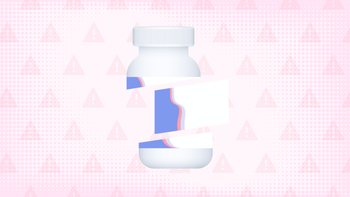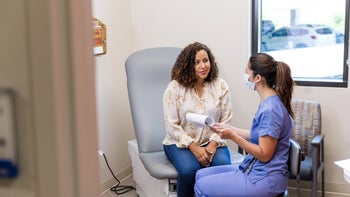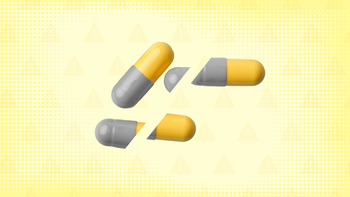
GoodRx Guide
Urinary Tract Infection (UTI): Your GoodRx Guide
Comprehensive information for you or a loved one — including treatment options and discounts on popular medications.Definition
A urinary tract infection, or UTI, happens when germs invade your urinary tract and start to grow there.
Your urinary tract is the system that makes, stores, and removes urine from your body. It consists of four parts:
The kidneys, which make urine
The ureters, which carry urine from the kidneys to the bladder
The bladder, which stores urine
The urethra, the tube that releases urine from the bladder when you pee
An infection can happen in any part of the urinary tract, but it is most common in the bladder.

Symptoms
The most common symptoms of UTI are:
Pain or burning when you pee
An urgent need to pee
A need to pee frequently
Cloudy, pink, or blood-tinged urine
Pain in the lower abdomen, where the bladder sits
Sometimes, the kidneys and ureters are called the “upper” urinary tract, and the bladder and urethra are called the “lower” urinary tract. An infection of the upper urinary tract — called pyelonephritis — is much more serious than an infection of the lower one. Pyelonephritis causes fevers, vomiting, and back or side pain.
Causes
Most UTIs are caused by bacteria in the urinary tract. In the vast majority of cases, the bacteria is E. coli, which normally lives in our intestines and helps us digest food. UTIs happen when bacteria from the gut find a way to enter the urinary tract and grow there.
UTIs are more common in people with vaginas. In these people, the urethra — and, therefore, the distance between the bladder and the outside world — isn’t very long, so bacteria don’t have far to go to reach the urinary tract.
In people who have a penis, the urethra is much longer. In this group, UTIs are uncommon between the ages of 15 and 50.
Having sex is one way that bacteria moves from the intestinal tract to the urinary tract, so people who are sexually active are at higher risk.
Urinary catheters, which are medical devices that empty the bladder, can also cause UTIs. If you develop UTI symptoms after having surgery or using a urinary catheter, it could be because the catheter carried germs into your bladder and gave those germs a place to grow.
Finally, UTIs can occasionally be caused by bacteria entering the kidneys through the bloodstream. This is more likely to happen in people who have other medical problems, such as a suppressed immune system, endocarditis (infection in the heart), or sepsis (severe infection in the body).
Diagnosis
To get a UTI diagnosis, urine is collected and tested for signs of a UTI using one of three different tests.
Urine dipstick test
The most common test for UTI is a urine dip or dipstick test. This type of test is quick and performed right in your provider’s office. This test can pick up on signs of inflammation in the urine, like leukocyte esterase (which comes from white blood cells), nitrites (which are made by some bacteria), and blood.
Although a urine dip test can be done quickly, it isn’t always the best test for a UTI. Things like menstrual blood and sexually transmitted infections (STIs) can sometimes interfere with the results.
Urinalysis
A urinalysis takes about 1 day to complete. Urine is tested for signs of infection and inspected under a microscope. This type of test can find:
Red and white blood cells
Bacteria
Yeast
Although the results from a urinalysis can be more specific than those from a dipstick, it isn’t the fastest or the most accurate test for detecting a UTI.
Urine culture
A urine culture is the most accurate test for a UTI. It allows laboratory professionals to study the bacteria causing infection and to find out which antibiotics are likely to best treat it.
However, a urine culture takes several days to complete. Waiting for results before treatment (antibiotics) in someone with a UTI would mean extra days of discomfort, along with the risk of a mild infection getting worse. For this reason, a urine culture is not usually done in otherwise healthy people who have clear UTI symptoms.
Medications
For most adults with a UTI in the lower urinary tract, a 3- to 5-day course of antibiotics is all that’s needed. People with more complicated UTIs, such as those with other medical problems, young kids, or those with pyelonephritis (kidney infection), often need a longer course of treatment.
The choice of antibiotic for treating a UTI depends on a number of things. Your healthcare provider will take into account:
The type of bacteria causing your infection
Antibiotic resistance in your community
The risks and benefits of different medications
Your personal medical history
Here are some of the antibiotics commonly used to treat UTIs in adults.
Nitrofurantoin (Furadantin, Macrobid, Macrodantin)
Trimethoprim/sulfamethoxazole (Bactrim, Sulfatrim)
Fosfomycin (Monurol)
Ciprofloxacin (Cipro)
Levofloxacin (Levaquin)
Amoxicillin/clavulanate (Augmentin)
Treatments
When you have a UTI, the symptoms can make you miserable, and it might take a few days for the antibiotics to work. Fortunately, there are a number of over-the-counter options that can help you feel better in the meantime:
Acetaminophen (Tylenol) can improve bladder pain when you have a UTI. Since acetaminophen is not processed by your kidneys (it’s processed by your liver instead), it is a safer choice than ibuprofen or naproxen for people who have pyelonephritis.
Ibuprofen (Motrin or Advil), naproxen (Aleve), and other non-steroidal anti-inflammatory medications (NSAIDs) can help reduce bladder pain. Because these medications are processed by the kidneys, it’s best to avoid them if you have pyelonephritis.
Phenazopyridine (Azo, Pyridium, Uricalm) is a urinary analgesic. It works by numbing the inside of the bladder and urethra. Phenazopyridine is not an antibiotic and will not kill bacteria or cure your infection. You shouldn’t need to take this medication for more than 2 days in a row.
Remember, although painkillers can help your symptoms, they aren’t a complete treatment for a UTI by themselves. An antibiotic is still needed to kill the bacteria and keep the infection from getting worse.
When a lower UTI is left untreated, it can cause pyelonephritis. This is an infection that involves the kidneys and usually requires treatment in the hospital.
Prevention
If you’ve had a UTI before, the chances are good that you’ll have another one. In fact, 27% of women with a first UTI get recurrent UTI within 6 months.
But there are things you can do to make this less likely:
Stay hydrated: If you drink less than 1.5 liters of water per day, increasing your daily fluid intake to 2 or 3 liters can reduce the risk of repeat UTI by as much as 50%.
Empty your bladder after sex: Although it has never been proven to have any benefit, many experts recommend urinating right after you have sex to help wash bacteria out.
Wipe front to back (if you have female genitals): It’s not been studied formally, but doing this may help avoid spreading bacteria from your anal area to your urethra.
Consider changing your contraception: Nonoxynol-9, a common spermicide used in condoms, and diaphragms can increase the risk of UTI. Pick a form of contraception without this ingredient.
If you frequently get UTIs, it might be worth taking medication to reduce your risk. Talk to your provider to see whether a preventative (also called prophylactic) medication is right for you.
Low doses of antibiotics are often used to prevent UTIs.
People who are past menopause have less estrogen, which can result in more frequent UTIs. An estrogen cream (Estrace) or estrogen-secreting vaginal ring (Estring, Femring) or tablet (Imvexxy, Vagifem, Yuvafem) can sometimes help prevent UTIs.
Plenty of over-the-counter options are available to help prevent UTIs, although the evidence to support their use is not robust. A few of the most widely used include:
Probiotics
D-mannose
Common concerns
Yes. An infection in the urinary tract can happen anywhere along the urinary tract. It helps to think about the urinary tract in two parts: the upper urinary tract (kidneys and ureters) and the lower urinary tract (bladder and urethra).
An infection of the upper urinary tract (called pyelonephritis) is much more dangerous than an infection of the lower urinary tract. Fortunately, they are rare. Infections of the lower urinary tract, also called bladder infections or cystitis, are much more common.
UTIs can also be caused by different types of bacteria.
Yes, they can, but it’s less common. In people with male anatomy, UTIs are uncommon between age 15 and 50. They are more common in middle age and beyond, and in people who have insertive anal sex or who are not circumcised.
In some young and healthy people, a simple UTI can go away without antibiotics. How long it will take and whether it will go away completely are hard to predict. Usually, the symptoms cause too much discomfort to wait for treatment. Healthcare providers recommend always treating UTIs with antibiotics if you are pregnant, are older, or have other medical problems. If you have a fever, back pain, or vomiting, that’s another sign that your UTI is getting worse and is not going away on its own.
Usually, UTI symptoms should go away within 2 days of starting antibiotics. In many cases, people can start to feel better within just a few hours.
No. Apple cider vinegar is not a treatment for UTI.
References
Bergamin, P. A., et al. (2017). Non-surgical management of recurrent urinary tract infections in women. Translational Andrology and Urology.
Carey, M. R., et al. (2020). Is non-steroidal anti-inflammatory therapy non-inferior to antibiotic therapy in uncomplicated urinary tract infections: A systematic review. Journal of General Internal Medicine.
Centers for Disease Control and Prevention. (2010). Frequently asked questions about catheter-associated urinary tract infections.
Foxman, B. (1990). Recurring urinary tract infection: Incidence and risk factors. American Journal of Public Health.
Gupta, K., et al. (2011). International clinical practice guidelines for the treatment of acute uncomplicated cystitis and pyelonephritis in women: A 2010 update by the infectious diseases society of America and the European society for microbiology and infectious diseases. Clinical Infectious Diseases.
Hooton, T. M., et al. (1991). Nonoxynol-9: Differential antibacterial activity and enhancement of bacterial adherence to vaginal epithelial cells. The Journal of Infectious Diseases.
Hooton, T. M., et al. (2018). Effect of increased daily water intake in premenopausal women with recurrent urinary tract infections: A randomized clinical trial. JAMA Internal Medicine.
Klimberg, I., et al. (2005). Time to symptom relief for uncomplicated urinary tract infection treated with extended-release ciprofloxacin: A prospective, open-label, uncontrolled primary care study. Current Medical Research and Opinion.
Knottnerus, B. J., et al. (2013). Women with symptoms of uncomplicated urinary tract infection are often willing to delay antibiotic treatment: A prospective cohort study. BMC Family Practice.
Lee, S. R., et al. (2020). The 2020 menopausal hormone therapy guidelines. Journal of Menopausal Medicine.
MedlinePlus. (2021). Urinary tract infection — adults.
NWHN Staff. (2019). Urinary tract infections (UTIs).
Office on Women’s Health. (2019). Urinary tract infections.
Perrotta, C., et al. (2008). Oestrogens for preventing recurrent urinary tract infection in postmenopausal women. Cochrane Database of Systematic Reviews.
Sen, A. (2008). Recurrent cystitis in non-pregnant women. BMJ Clinical Evidence.
Urology Care Foundation. (2021). Urinary tract infections in adults





























